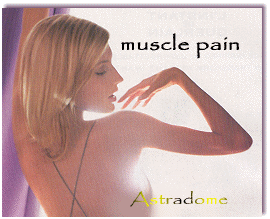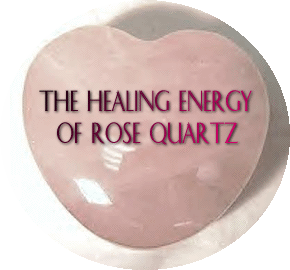|



enter

Spring is a
time most of us wait anxiously for after a long,
dreary winter. Oddly enough, there will be those who will
not welcome its arrival. Statistics show that many people are
suicidal at this time. Why? My observation is that Spring is
a time of renewal - rebirth - starting over. And for people who
are depressed, they just don't have the energy to make the effort.
Depression of varying severity will affect as many as 20% of all of us
at one time or another in our lives. Severe anxiety is even more
common. Sooner or later for
whatever reason, everyone feels blue.
Our spirits sag and we slide down in the dumps for a few days.
Sometimes our feelings of depression can be a symptom of another
problem, such as the flu or a hormonal imbalance or a normal and
temporary reaction to a traumatic event - even a happy event
(letdown). Usually within a week or two, we start to feel
better. However, sometimes the depression persists and deepens over
several weeks or months trapping the body as well as the mind in a bleak
cocoon of hopelessness and helplessness.
According
to the American Psychiatric Association
(APA),
nearly 80% of all people who fall victim to depression fail to recognize
the illness and get help. They may instead attribute their
weariness and aches to the flu or "some bug that is going
around", or chalk it up to the fact that they are stressed.
When they cannot think clearly - they think their lack of sleep is the
culprit - and it may or not be. Perhaps about 20% to 35% of all
depressed people are chronically troubled. Depression can appear
at any age - even in infancy.

Symptoms
of depression for adults may include: Sleep
disturbances, loss of appetite, loss of interest in sex, lethargy,
physical aches and pains, stomach upset, loss of interest in friends,
favorite activities, or any form of pleasure. Clinical
Hypnotherapy (in collaboration with the medical and counseling
community) has made significant contributions in treating depression,
offering a wider variety of approaches to
solving problems with depression. Until recently the conventional
wisdom was that the use of Hypnotherapy and Hypnoanalysis was
inadvisable in the treatment of depression because they assumed that
clients might become so depressed that they would take their lives, or
otherwise create some harm to themselves. Those in the field of
Hypnotherapy owe a great deal of appreciation to Michael
D. Yapko, PhD
for his publication of Hypnosis
and the Treatment of Depression,
Brunner/Mazel, Inc., NY, 1992 WHAT
CAN YOU DO? (There
are several methods of treating depression). 
enter
Regression:
This can be a very effective method. Doing some
ego-strengthening work along with the actual regression is
recommended.
Visualization:
This
is also an effective method in treating depression. Visualizations
are only limited by the creativity of the therapist. Taking the
client to a time past when s/he was not depressed and doing visuals from that
happy time period along with positive suggestions will usually bring
desired results. Dream Analysis:
This
is very potent, especially when the therapy is not moving along as
rapidly as it should be. The therapist gives the suggestions that
the subconscious will find a safe and constructive way in the client's
dream cycle to convey important information to the conscious mind
regarding the nature of the depression. (It would be suggested to client
that s/he keep a dream journal and record the dream immediately upon
awakening). 
enter
LOST:
the little child within

Perhaps many of you reading this can
relate to your own little child - lost and abandoned within the recesses
of your soul. Despite mainstream focus on how important it is to
reclaim the "child" within, many of us are still unable to
accomplish this because of our fear of facing our childhood pain,
thinking it is best to let well enough alone. However, a published
article written
by Armand DiMele, a
practicing psychotherapist in NYC, caught my attention -
big time.
DiMele
opens his article with the fact that endocrine
research suggest that people become addicted to their own
endorphins. They help us to deal with pain by the process of numbing.
Anything that the body interprets as pain, whether physical or
emotional, can trigger the release of endorphins. If constant, it
provides a certain feeling of invulnerability and a very controlled,
limited feeling level. Endorphin induced dullness is quite pleasant compared to feelings of
vulnerability.
Nail biting, over-working or over exercising to the point of pain are
negative ways of triggering endorphins. This is because
stress, tension, worry, fear
and grief send signals to the master control to release
endorphins.
Constant endorphin presence can lead
to an actual addiction and we become attracted to the things that cause
pain in order to get our dose of endorphins. Pain becomes an
integral part of an endorphin/pain addiction. Neurologists
have identified a syndrome, alexithymia,
which is a constant state of numbness. It is prevalent in our society, where people have shut themselves
down because they are unable to cope with their stress. The
price they pay is the absence of feelings that make life worthwhile - like
joy,
vitality, sexuality, and unlimited love.
DiMele
feels
the most effective way to reverse numbness is to combine body awareness
with psychotherapy that targets emotions. We must feel our "emotions"
rather than intellectualize about them.
Embracing the innocence, hope, expectancy and joy
felt by the "little
child" within is
essential towards healing our deep-seated
wounds. We must regain our passion
for life - and feel free to become all that we essentially are. Severing the
psychological ties to the past that were hurtful, traumatic,
disappointing, etc. can be accomplished once you decide that you
want and expect more out of life.
It is important to seek help - no matter what venue - to assist you in
your endeavor. Make a commitment to acknowledge your "little child" within
now -
and reassure it of your dedication to always being there to protect
it and cherish it. No longer will you allow yourself
of being detached
and numb of its
presence.
Visit
my self-help tape page:

enter


enter
enter

enter

enter

enter
PROTECTING
YOUR VISION
(Excerpts from an article written by Marc
Grossman, O.D., LAc.) 
Conventional medicine saves lives and
helps us to live longer, healthier ones. Yet there are many
instances where conventional medicine continues to fail at helping
people protect their vision.
One of the major cause of blindness in this country is macular
degeneration. To-date, there is
no effective treatment for this disease.
However, many
eye
diseases have proven to be
positively influenced by diet, exercise, and lifestyle routines.
Eating collard greens and
spinach was proven to lower
the risk of macular degeneration by 46%.
Lutein/zeaxanthin are two carotenoids
that have been shown to be deficient in people with the disease.
Natural sources are green leafy vegetables including spinach, kale, and
collard greens. Bilberry
strengthens the structural of blood vessels throughout the body and
promotes healthy circulation. Taurine
is an amino acid which supports the regeneration of worn out tissues of
the retina. Natural sources include eggs, meats and fish. Zinc
can also help in preventing macular degeneration. It is found
naturally in meats, oysters, and whole grains.
Regarding cataracts,
Alpha
Lipoic Acid can prevent cataract
formation as well as nerve
degeneration and radiation injury. It was determined that
cigarette smoking causes about 20% of all cataracts. The normal
healthy lens of the eye contains a higher level of Vitamin
C than any other organ of the
body except the adrenal glands. Vitamin
C controls sugar imbalances
that often play a role in cataract formation. Natural sources
include citrus fruits, red peppers and tomatoes. Glutathione is also very effective in
cataract prevention. Vitamins C, E, B2, B6, zinc, and selenium are
necessary. Natural sources include eggs, broccoli, avocados,
garlic, onions and cauliflower.
Regarding
glaucoma,
Alpha Lipoic Acid and Vitamin C were found to be helpful. Taking a
brisk 40 minute walk five days a week for three months can reduce the
pressure in the eyes by approximately 2.5 millimeters - similar to the
reduction seen when using beta-blockers. Ginkgo
biloba may increase the
circulation of blood to the eyes. Magnesium
is also essential in the diet. Natural sources include most nuts,
seeds, vegetables, seafood and soy products.
Caring for ourselves
helps to keep our bodies healthy and maximizes the mind/body's inherent
healing potential.
MUSCLE
PAIN
 For
long-term pain, a practitioner may recommend that you adopt a temporary
raw-foods or fruit diet to help "detoxify" the system. Muscle pain has been linked to a lack of serotonin, a chemical which
influences mood, helping to explain why antidepressants relieve certain
instances of FMS (fibromyalgia syndrome) which often affects the neck
and back. It frequently occurs with other conditions, such as
chronic fatigue syndrome, menstrual complaints, and irritable bowel
syndrome. To help the body manufacture serotonin, it is advisable
to supplement your diet with vitamin B and magnesium. For
long-term pain, a practitioner may recommend that you adopt a temporary
raw-foods or fruit diet to help "detoxify" the system. Muscle pain has been linked to a lack of serotonin, a chemical which
influences mood, helping to explain why antidepressants relieve certain
instances of FMS (fibromyalgia syndrome) which often affects the neck
and back. It frequently occurs with other conditions, such as
chronic fatigue syndrome, menstrual complaints, and irritable bowel
syndrome. To help the body manufacture serotonin, it is advisable
to supplement your diet with vitamin B and magnesium.

enter
FIGHTING
 OSTEOPOROSIS OSTEOPOROSIS
What causes
osteoporosis? Normally there
is a decline in bone mass after the age of 40 in both sexes, but women
are at much greater risk because of lower bone density prior to age
40. Osteoporosis
involves both the mineral (inorganic) and non-mineral (organic matrix,
composed primarily of protein) components of bone. There is more
to osteoporosis than a lack of dietary calcium. A lack of dietary
calcium in the adult results in a separate condition as osteomalacia,
or softening of the bone.
Although the entire
skeleton may be involved in post- menopausal osteoporosis, bone loss is
usually greatest in the spine, hips, and ribs, the bones bearing the
greatest deal of weight. At least 1.5 million fractures occur each
year as a result of osteoporosis, including 250,000 hip fractures.
Nearly 1/3 of women and 1/6 of men will fracture their hips in their
lifetime.
There are several
techniques to measure bone density: dual energy X-ray
absorptiometry (DEXA) which, in addition to providing
the most reliable measurement of bone density, the DEXA test also
exposes a person to considerably less radiation than other X-ray
procedures for measuring bone density. The measurement will
usually be of both the hip and lumbar. Women at high risk should
get a baseline bone-density measurement and then monitor the rate of
bone loss using a urine test known as the Osteomark-NTX.
|
Risk Factors:
Family history of Osteoporosis
Gastric or small-bowel Resection
Heavy alcohol use
Hyper-parathyroidism
Hyperthyroidism
Inactivity
Leanness
Long-term glucocorticosteroid therapy
Long-term use of anticonvulsants
Low calcium intake
Nulliparity (never been pregnant)
Postmenopause
Premature menopause
Short stature and small bones
Smoking
White or Asian race
|
What are the negative
dietary factors to avoid?
Soft drinks, alcohol,
sugar, protein, smoking. Studies show that milk consumption may
not lead to strong bones. Countries with the highest dairy intake have
the highest rate of hip fractures per capita.
Positive dietary
factors to maintain:
Supplement your diet
with vitamin & minerals: K,
boron, magnesium, ipriflavone (200
mg 3X daily) and calcium
(1000 mg daily).
What is the best form
of calcium?
Avoid
calcium derived from oyster shell, bone meal, or calcium hydroxapatite
as studies have indicated that they may contain substantial amounts of
lead or have a lower absorption profile compared to other forms of
calcium.
Calcium bound to
citrate and other Krebs cycle intermediates such as fumarate, malate,
succinate, and aspartate appears to be the best overall form of calcium
although refined calcium carbonate is still an excellent form for the
majority of women.
What about calcium
hydroxapatite?
There is little
science to support the manufacturer's claims that it is a superior form
of calcium for bone health. This form tested at 20% absorption
compared to 30% for either calcium carbonate or calcium citrate in one
study and was the poorest absorbed form out of five commercially
available forms in another.
Visit my page on
vitamins  for
a thorough explanation of all vitamin supplements. for
a thorough explanation of all vitamin supplements.
enter
MAGNETIC
HEALING

enter
#top of page
email: astdome@aol.com

|